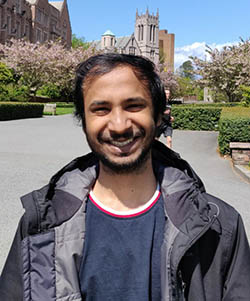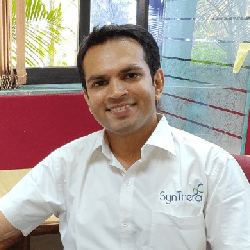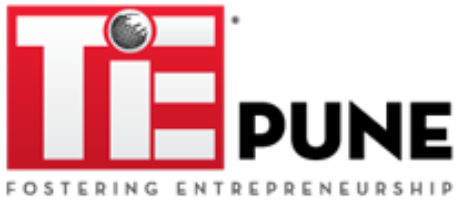
The Innovation Game
The path of an innovator is often long and lonely. They have to trudge often with Doubting Thomases, with obstacles big and small turning up with ferocious regularity and life itself, it seems, has turned against them. But fortune favours the brave. And our innovators armed with nothing more than the courage of conviction forge a path where no one had dared. In this issue, we find out what were the most significant challenges that innovators face whilst developing something no one has before them.
Bone from Silk?!

Anuya Nisal
Anuya Nisal (Founder, Serigen Mediproducts) and her team discovered that silk, which is used as fabric, can also be used in the body to repair wounds and bones. The journey started in 2010 when she found out that the sericulture industry in India is very mature and employs more than 8.7 million people. But most of the silk goes into textile.
“Now, contrast this to the healthcare industry in our country, where we import close to 80% of medical devices,” she says. The team’s idea to use silk to meet the needs of the medical devices industry would seem ludicrous to most people, but they saw the possibilities. Serigen has developed novel and innovative processing protocols that convert silk threads into a solution that can be structured and shaped into different forms to repair large portions of bone or breast tissue or help heal diabetic foot ulcers, bedsores and second-degree burns. This process has been patented.
The challenges for this patented technique to convert silk to bone etc. were many. Says Anuya, “In the medical devices industry, safety is of prime concern. But this path to safety is a long one. And it costs money. We raised investments via several sources – competitive and prestigious Govt (BIRAC) grants, angel investors, promoters and raised more than Rs. 6 Cr. It is not a smooth trajectory, and you need to be resilient. You have to keep on going ahead.”
Her advice to early-stage entrepreneurs: “It’s always easy to give up on your idea. But it needs significant effort, willpower and courage to pivot and find alternative avenues where your technology can make a difference. Follow your passion and it will lead you to something unique”
It is also important to network beyond your comfort zone. “As a scientist, you mostly interact with other fellow scientists at various events. Entrepreneurship requires you to be on top of various aspects – sales and marketing, fundraising, intellectual property, regulatory, story-telling, human resource management, etc. It is therefore important to network with investors, mentors, incubators, regulators, industry experts and so on. It’s important to participate in various contests, so you can meet other entrepreneurs and learn from them.”
A camera to check microcirculation in your body - SpeccaFlow by Epocare

Deepak Kumar
Deepak Kumar was always fascinated by the applications of medical imaging technologies from his college days. He followed this up by an association with faculty from MIT Media Labs and the University of Washington. And after years of toiling on this dream along with his team, he was able to come up with a tissue imaging device called SpeccaFlow.
Says Deepak, “It is extremely hard to develop a great deep-tech medical company in India as the product development phase can span years because of the R&D. And because of this long gestation period, investors usually shy away from funding. This is compounded by the need to sustain a team and procure necessary resources. The only good thing about the health-tech space is the equity-free grants that are available to the start-ups from the Govt.
“I also found it hard to get good talent, as we worked on cutting edge technology. As a result, we had to rely on associations with Indian and foreign universities for good technical inputs. Being incubated in SINE IIT Bombay, definitely helped us tackle these challenges.
“Procurement of high-end R&D prototyping optical equipment, sensors, cameras is another obstacle we had to clear. Most of the inputs have to be imported and this is challenging as it increases the price of the final product.”
Epocare has beaten all these odds to have developed a new tech imaging camera – SpeccaFlow that is currently in the clinical trial phase.
Synthera uses glass to repair skin, teeth and bone!

Nilay Lakhar
Nilay Lakhar was a young Ph.D. scientist working at Helmholtz Institute in Germany when he decided to get into the business of advanced materials that focus on healthcare. Translated, it means he was eager on next-gen technologies based on speciality bioactive glass. Yes, glass. But hold on. Not the glass that makes your dinner plate or car window, but glass that’s used inside your body to regenerate bone, repair skin and dental enamel.
Being incubated at Venture Center (NCL) Nilay feels the biggest challenge for an innovator start-up is money. Says he, “you can have a lot of ideas, but without money you cannot do much. I gave up my well-paying job to start Synthera and invested about Rs 14 lakhs to get on my discovery journey.”
“An entrepreneur has to go without a salary, which is an opportunity cost. How long they can do that is important. Also, the time of money availability is significant. There were times when we had to go slow because of this.”
Networking is another thing without which an innovator will find the journey harder. “A well-networked innovator like say a scientist who has worked at say a top research institute begins to develop a new product. He will already know from where he can get technical resources, labs, Govt. schemes for funding etc. Compare this with a student fresh out of college working on innovation. He will know nothing about where to find partner labs, Govt. schemes, technical expertise and so on. It will simply delay the process.
“The third obstacle I feel is having a well-developed industry-academia ecosystem. It’s simple really. Corporates are big and can afford research, whereas start-ups are small and have limited capabilities. We had approached a Contract Research Organisation for animal trials, but their fees were simply not affordable. Many large glass companies often do not understand the value our innovation can bring, or sometimes feel it may not bring enough quick returns. If there is a vibrant industry-academia ecosystem, then it can help innovators immensely. It has started happening here, but we still have miles to go.”
Contact us if you have a story to tell: rashmi.ghosh@tiepune.org

